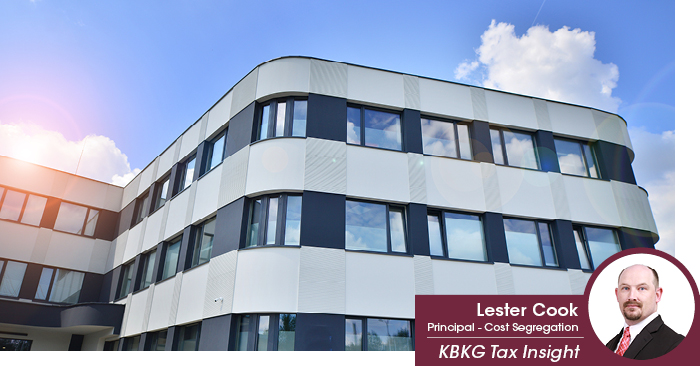Cost Segregation For Real Estate
Buying, building, or renovating a home or commercial property is expensive. Fortunately, investors can turn to cost segregation for financial relief and more efficient tax planning.
Learn how Cost Segregation could benefit your tax strategy!
See if you qualify.
Understanding Cost Segregation for Real Estate
Most property owners know about the depreciation deduction, allowing you to write off the building depreciation when you file taxes. Land does not depreciate. However, residential buildings diminish in value over 27.5 years, and commercial properties depreciate over 39 years.
While beneficial, the average single annual deduction is not significant. With a cost segregation study in real estate, you can fast-track the depreciation schedule for properties other than your personal home and increase the amount of your deduction yearly.
Think of a building and its surrounding land as more than a single structure. It has separate elements, such as carpeting, plumbing, sidewalks, heating and cooling ducts, and much more. With cost segregation in real estate, you categorize the property’s individual assets and benefit from the accelerated depreciation schedule of specific building components.
Breaking Down Cost Segregation Analysis for Real Estate
There are four general steps in a cost segregation study:
Completing feasibility analysis
First, your team will study every element of the property, including the electrical systems, roofing, and more, to determine if you are a strong candidate for cost segregation.
Gathering the information
Some documentation you will need for the cost segregation study includes inspection reports, a recent appraisal, or the records from closing the purchase. Your team uses these documents to calculate the value of the property and its individual systems.
Analyzing the property
Next, your team determines the cost of operation. Property records, blueprints, and inspection reports provide information on operational costs that can depreciate over five, seven, or 15 years.
Creating a report
Finally, your team will compile a report containing all the information gathered through the cost segregation analysis and use it to determine what you could save when filing income taxes and what strategies you should employ.
For example, assume you purchase a residential property for $2 million with land valued at $800,000. Without a cost segregation study, you deduct the depreciation value of the building as a whole. Since the land does not count, you only deduct depreciation from $1.2 million.
Using the same example, imagine you employ a cost segregation tax strategy. The result could include depreciation of personal property at $200,000 over five or seven years and land improvements at $50,000 over 15 years. With the building’s depreciation value, that would leave you with a single-year deduction significantly higher than without real estate cost segregation. Use an online cost segregation calculator to estimate your savings instantly.
Benefiting From Cost Segregation for Real Estate
Anyone who purchased or built an investment property during the last 15 years could benefit from cost segregation for real estate. You can conduct an analysis at any time. However, the most beneficial time is within a year of purchasing, remodeling, or building. If you have questions about tax credits, cost recovery, or deductions, we are ready to help!

Follow KBKG on Social Media Linkedin Facebook X-twitter Youtube By Eddie Price| Principal, Cost Segregation With the passage of the One Big Beautiful Bill Act (OBBBA), Opportunity Zones (OZ) have shifted from a temporary incentive to a permanent fixture, fundamentally altering how real estate investors

Follow KBKG on Social Media Linkedin Facebook X-twitter Youtube By Lester Cook | Principal, Cost Segregation The 2025 One Big Beautiful Bill Act (OBBBA) introduced a significant opportunity for domestic manufacturers with the creation of Qualified Production Property (QPP) under new IRC §168(n). This new

Follow KBKG on Social Media Linkedin Facebook X-twitter Youtube By Lester Cook | Principal, Cost SegregationThe One Big Beautiful Bill Act (OBBBA), signed into law on July 4, 2025, permanently restores and enhances key provisions of the Tax Cuts and Jobs Act of 2017. From 100%

Follow KBKG on Social Media Linkedin Facebook X-twitter Youtube By Amar Patel | Principal, Cost Segregation Real estate investors know that tax strategies can make all the difference in maximizing profits. One of the most powerful, yet underutilized, tools available is the short-term rental (STR) loophole.

Follow KBKG on Social Media Linkedin Facebook X-twitter Youtube When Cost Segregation studies are conducted, professional standards and technical accuracy are critically important, especially as studies are subject to IRS scrutiny. The best way to assess a provider’s qualifications is to confirm whether the person

Follow KBKG on Social Media Linkedin Facebook X-twitter Youtube Many CPAs likely come across clients who have historically mis- or over-capitalized expenditures, particularly in real estate, retail or manufacturing. Fortunately, tax preparers don’t need to amend years of returns to correct these issues. The IRS

